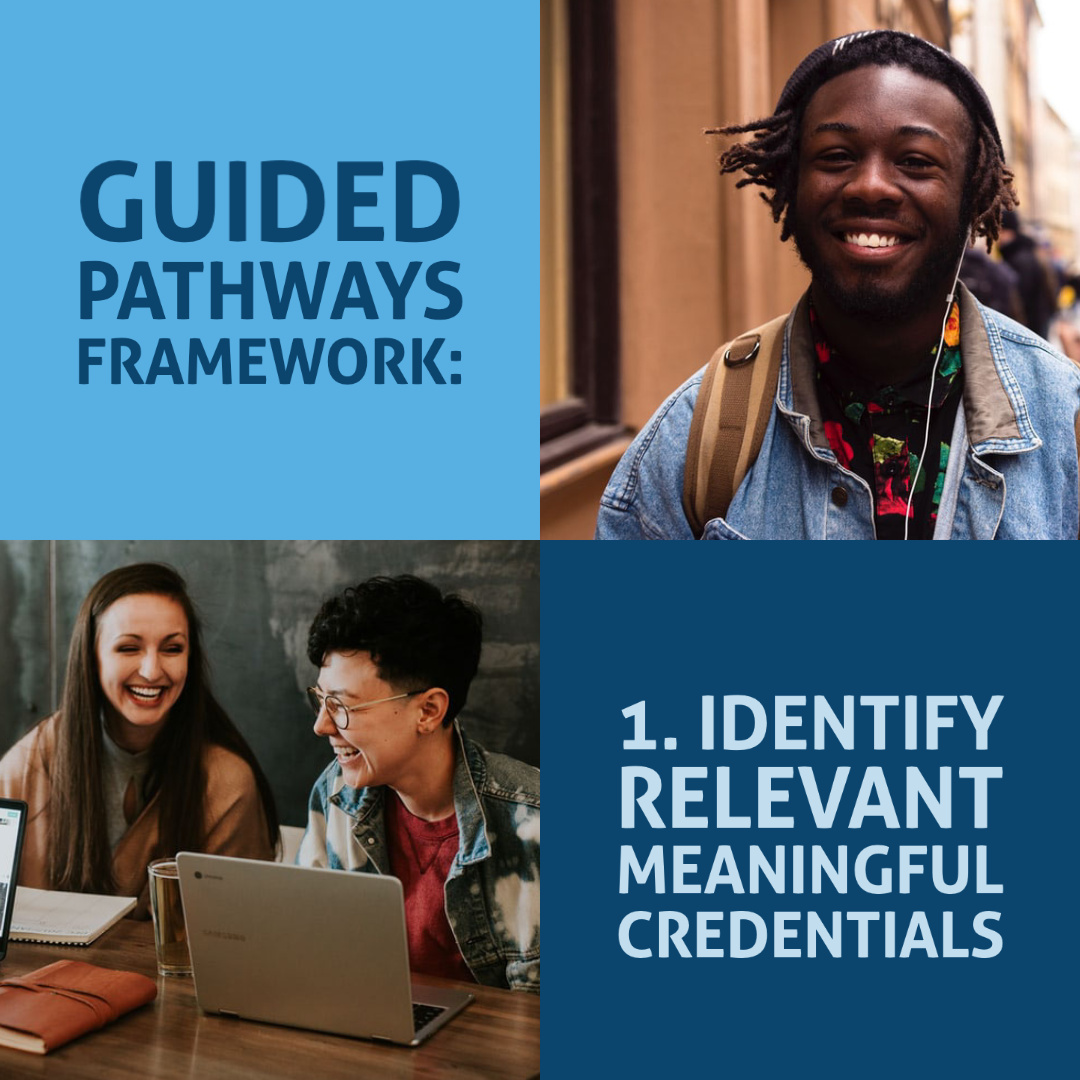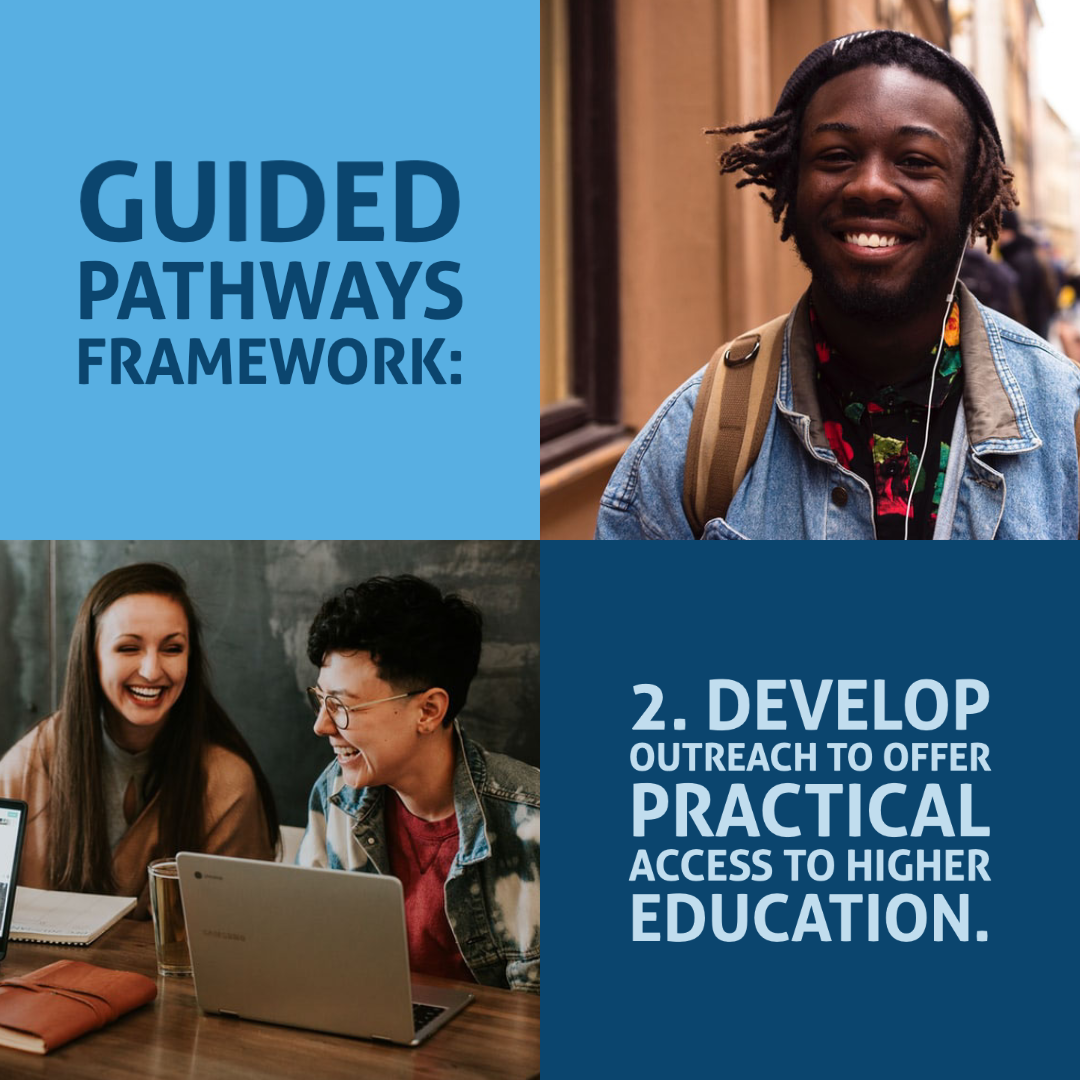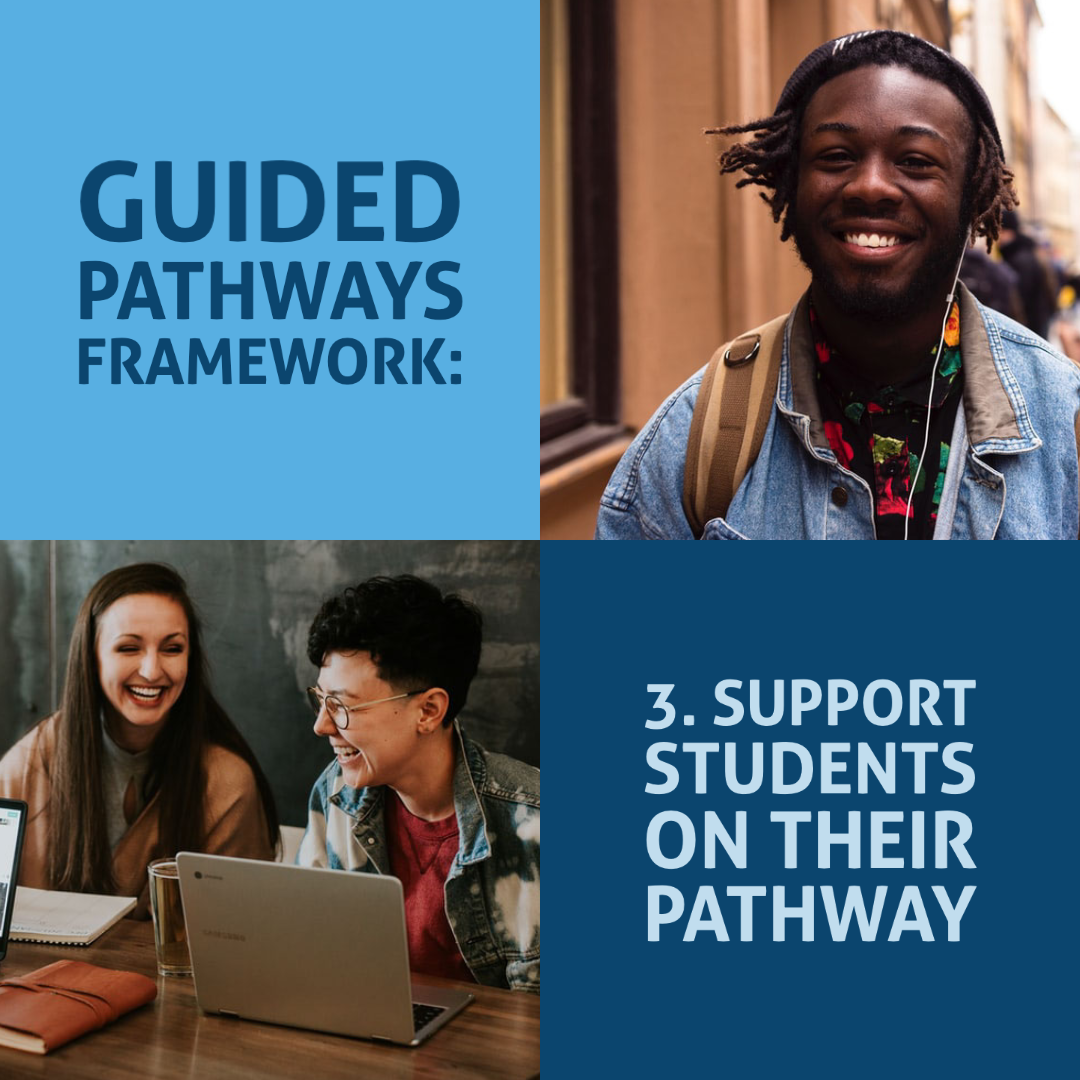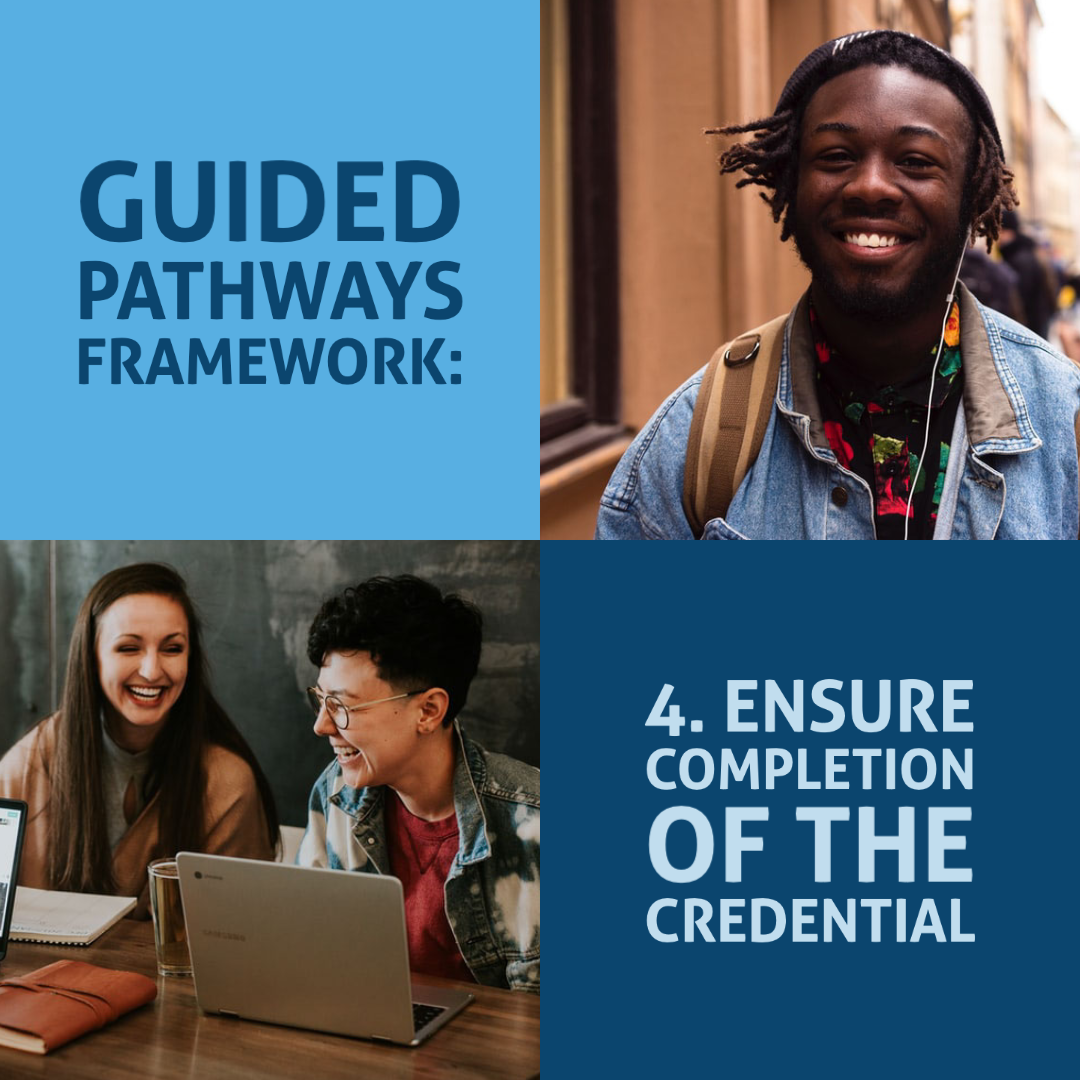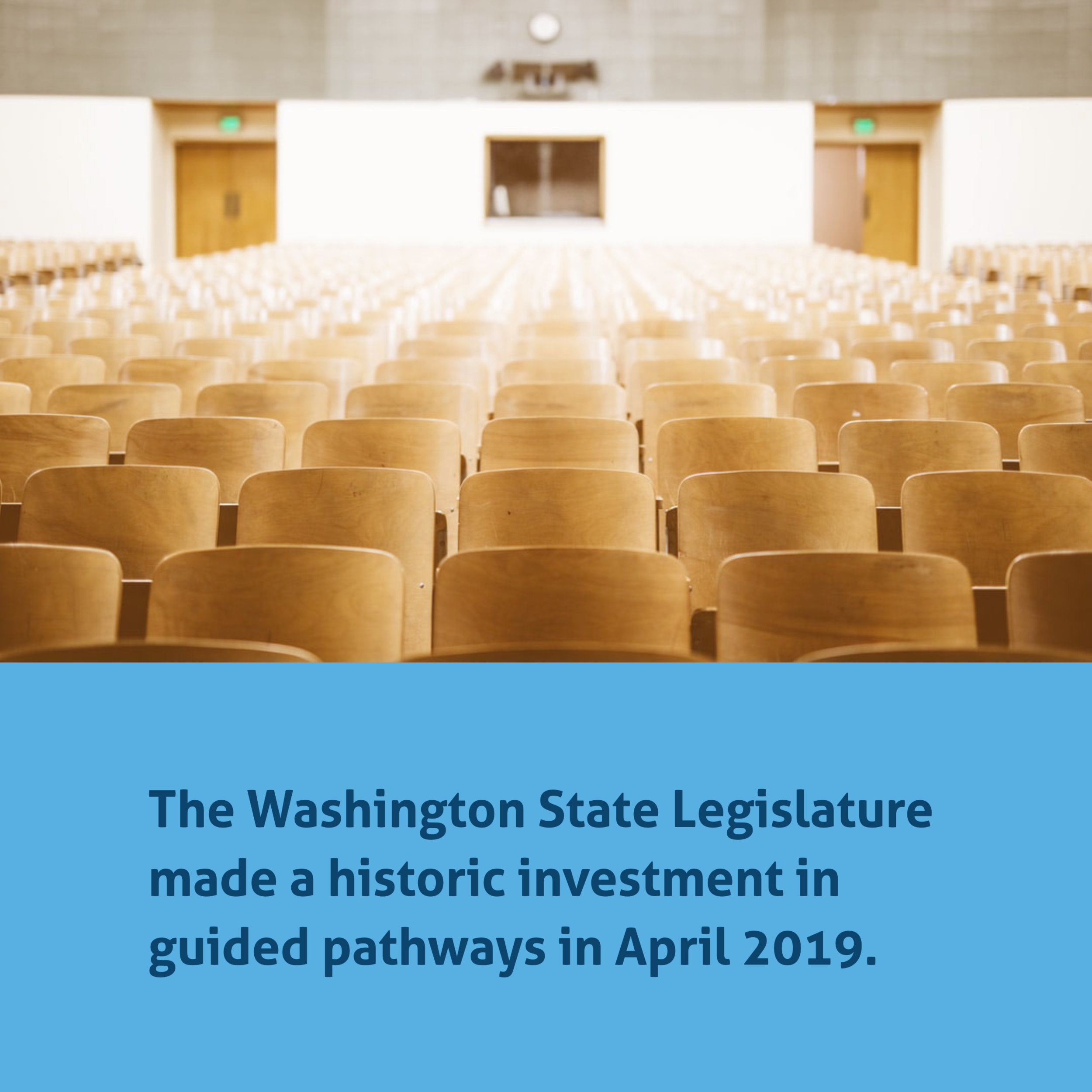In Search of Students For Post-Secondary Guided Pathways
Let’s face it: with its traditional focus on the highest academically achieving new high school graduates, our U.S. system of higher education was “developed to successfully support a certain demographic of student.” And by the way, for many decades, the vast majority of those students who attended college were white men.
Every student deserves the opportunity to succeed.
The words in quotation marks above come from Kristi Wellington-Baker, who is Director of Washington State’s Student Success Center & its Guided Pathways program. She took the time to tell us about her professional mission to bring the idea of valuable post-secondary education opportunities to all K-12 students. The Guided Pathways framework helps people of all ages navigate the many options for technical training, certificates and degrees; linking to both K-12 schools and its partner 4-year colleges.
The four pillars of the framework are: 1) identifying relevant meaningful credentials to qualify students for roles in the workforce that are most suitable for them, 2) developing communications strategies and outreach to communities to offer practical access to higher education, 3) keeping students on their pathways, and 4) ensuring completion of the credential, whether a certificate or an associate’s degree.
The populations served by Guided Pathways are disproportionally low income, students of color, and first generation post-secondary students. Some are homeless. Kristi is proud of the equity aspect, “ensuring everyone gets a chance.” She observes that most kids will simply follow the path of whatever their parents have done, absent a positive intervention in the form of an invitation to explore tangible new opportunities after high school. The program also manages transitions into the workforce and to 4-year academic institutions.
Rather than upholding ‘the right to fail,’ Kristi adopts the model of assuming everyone wants to succeed; they just need help finding their way. She’s also keenly aware that “our economy needs an effectively trained and educated workforce” of the future. She references “a bifurcated recovery” from the last recession as evidence that the system is failing too many individuals, while the current virus pandemic forces us into another recession in 2020.
About five years ago, a trend around “redesigning America’s community colleges” began. That’s when a cohort of 5 colleges first asked the state legislature for funding under the banner College Spark Washington (CSW). Along with a second group of 5 colleges in 2018, and two who were part of The American Association of Community Colleges (AACC) pathways, they successfully launched guided pathways. Kristi reports early results that are “incredibly promising” and provide lessons and support strategies toward a scaling model.
In all there are “12 colleges that we call early adopters,” says Kristi, with “historic investment from the legislature” in Olympia. “The last legislative session supported scaling of this work across the state with all the community and technical colleges” she said, and “the rest of the colleges partner up with the early adopters” to “leverage the learning” from those peer institutions.
Meanwhile, large urban colleges and universities integrate the guided pathways framework differently. For example, they conduct ‘mapping’ of educations plans, indicating “what courses you need to take in what sequence” for example, at a University of Washington campus, to get a degree in a particular field. Many students find that course offerings are inconsistent with the ability to progress toward and complete a degree around scheduling inconsistencies, not to mention the student’s own needs with respect to factors such as day vs. evening classes. Course selection complexities disproportionally impact those who don’t have the flexibility in life to adjust their work and family schedules, including childcare, to a large institution.
Forcing people to fit the institution rather than having it adapt to serve the people is the “language of the college-ready student vs. the student-ready college,” according to Kristi. If it’s nearly impossible to meet a degree requirement in a reasonable time frame, that just derails students cold. And now there are folks who have experienced primary trauma from the coronavirus, that’s a non-trivial factor in their lives. One piece of essential best practices in Guided Pathways is the mandatory advising model, which includes holistic student supports, like easing food and housing insecurity that otherwise puts up barriers for the most vulnerable students.
Finally Ms. Wellington-Baker described current work on a direct administrative initiative to support the high school Class of 2020 and helping them to understand what their options are in the community college sector. This includes forging “individual partnerships between K-12 school districts and our colleges to make sure that every senior goes on.” Pathways is building up those relationships, going beyond standard counselor workshops and connecting people more deeply, encouraging dialogue about internships, job shadows and understanding what real life work looks like. Whether it’s a hashtag like #EverySeniorisaFreshman2020 or something more catchy, we have to get especially proactive this year so “we don’t lose students in the pipeline.”
Kristi is open about the reality that both her personal and professional worlds are much different than she ever imagined a few months ago, but she encourages others to look for ‘silver linings.’ One of those she mentioned is that a former federal ban or restriction on military veterans’ access to online coursework has now been lifted. “The challenge is giving people the space to breathe…not to go back, but to look to shape a new system.”


